 Food safe fabric for reusable lunch bags and mats can be harder to find than you think. What are the alternatives?
Food safe fabric for reusable lunch bags and mats can be harder to find than you think. What are the alternatives?
We’ve had numerous discussions about plastic and vinyl options for crafting here at Crafting a Green World. In fact, Kelly stated why vinyl was bad and even gave a tutorial on how to make your own oil cloth as an alternative to vinyl. And she mentioned how PEVA is a better option to vinyl and how it’s used in making so many crafts, including reusable lunch wraps and bags.
And with back to school upon us, we want to promote waste free lunch packaging by using reusable lunch bags. But as a recent article in the New York Times states, eco-friendly lunch packaging could be a challenge.
So while we try to do the ‘right’ thing and even go further by making our own reusable lunch sacks and wraps, I wonder, are PEVA and PUL based fabrics safe for food? In trying to be eco-friendly, are we putting our kids health in danger by using plastic for wrapping their food in plastic?
Polyethylene Vinyl Acetate
I know this is not the “bad” vinyl that doesn’t have chlorine in it but it’s still plastic, derived from petroleum. But is it food safe because it doesn’t contain chlorine and BPA? In fact, some BPA replacements can be just as toxic as the BPA it’s trying to replace. So how do we know if PEVA is safe for food, just because it’s not PVC?
The truth is, we just don’t know the long term effect of this plastic yet even though many household items and toys are now made with it.
Beth of Plastic Free Life has a list of lunch packaging options and she states the ‘pros’ and ‘cons’ on each of them. Most are lined with some sort of plastic, probably PEVA or PUL. But as she points out, having any plastic touching kids lunch in a lunch wrap or lunch bag is unsettling.
Polyurethane Laminate (PUL)
I remember when I was researching fabrics for making my own reusable wraps back in 2009, and came across many crafters who were selling polyurethane laminted fabric called PUL, mainly made by a company called Fabrite. I contacted the company to find out if PUL is food safe. The COO of Fabrite, Melody Levy replied and said, “We do not sell PUL as a fabric that is safe for food and also know people use it for that purpose. We do not market, certify or authorize food storage with PUL.”
Yikes! So what was I suppose to do?
I contacted the crafters who sold lunch wraps and bags to find out if they used a “different” kinds of PUL that was food safe (I thought, maybe, there were different kinds that they were using that I didn’t know about.) But much to my dismay, they all used the same type – the kind that Ms. Levy stated is not food safe. So clearly, these crafters weren’t either aware that it wasn’t food safe or they didn’t care.
I even found one article that questions PUL for using it as a diaper cover because of chemicals involved in the making of PUL fabric. Do we want plastics touching our food if this article’s author is even questioning its use as a diaper cover?
I don’t think so.
So what’s a good alternative?
I know there are nylon rip stop lined wraps too but they are nylon – petroleum derived fabric. I know it’s “Water resistant” and “stain resistant” but still, it’s petroleum derived and chemically treated.
Personally, I would rather use unbleached cotton canvas, the thicker the better. You can either sew an envelope type of bag to insert your sandwich or strategically add a couple of pieces of velcro (I know it’s plastic but at least, it won’t touch your food) to wrap your sandwich. Since cotton canvas is thicker than most cotton, even if there’s a little bit of liquid, it won’t soak through. And since it’s unbleached, you don’t have to worry about chlorine.
I know making your own sandwich wraps and bags are cheaper than buying them but I would really look hard at those plastic lined fabrics when making lunch wraps for kids. After all, aren’t we making lunch ourselves so that they can be healthier? Why risk their health by wrapping it in plastic?
What do you use to make your lunch wraps and bags?

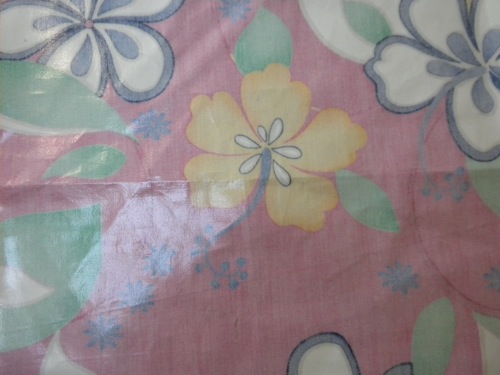
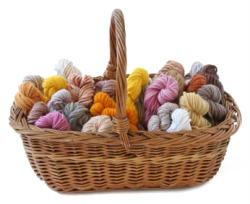
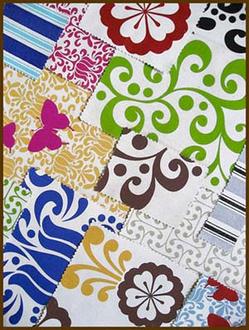
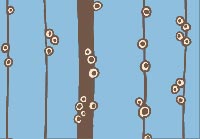
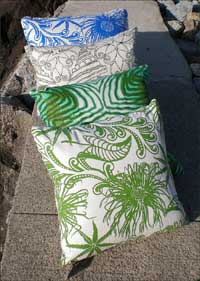

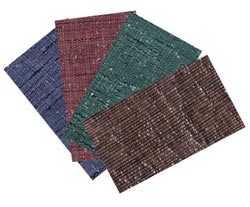
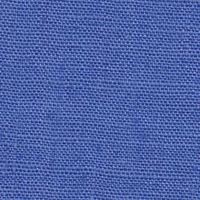
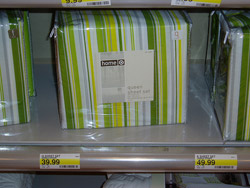
PUL is safe. To get it certified by the FDA requires thousands of dollars in testing. If someone were willing to have the fabrics tested, at their expense, companies like Fabrite, would have done the testing. Fabrite is now Out of Business. The Made in the USA, PUL, which is currently available, has been tested for use in diapers, by an independent lab, and it meets the CPSIA standards.
Do you have a link or a site that says that…that it’s food safe and it meets the CPSIA standards? I couldn’t find it anywhere.
Hi Karen, now food safe PUL is available. Made by AKASTEX and sold by Wazoodle Fabrics – http://www.wazoodle.com/fabrics/food-safe-fabrics.html
The film had to be changed to make sure it met FDA requiremenst for food safe PU. Plus it was tested in a US lab and passed all the required testing.
Do you have a link to a site that says PUL is food safe and it meets the CPSIA standards? I couldn’t find it anywhere.
eco -pul is cpsia
It is definitely NOT food safe! Diaper ‘safe’ maybe. Little Moose Diapers (On Etsy) has some great info, but I can’t find the link anywhere. She told me that the manufacturers website specifically states it’s not food safe. But BPA was ‘safe’ just a short time ago as well….
There’s a difference between ‘acceptable according to Federal standards’ and truly safe and healthy.
Missed a sentence!
“… the manufacturers website specifically states it’s not food safe. It is safe for use in diapers, but BPA was ‘safe’ just a short time ago as well….”
Makes a little more sense that way!
Thank you for this information. The controversy on these materials for food wraps is as thick as the unbleached cotton you recommend.
I shy away from PUL now because many crafters report having “side effects”, such as skin irritation, after handling it for a period of time. I was about to go with the RipStop nylon coated with PUL (on outside so it isn’t in contact with food), but your article changed my mind about nylon.
A growing popular choice is homemade oil cloth (with linseed oil) or beeswax cloth, but with these you lose the convenience of machine washable. Apparently, manufactured oil cloth is not considered safe.
Oilcloth is nothing but plastic backed fabric. The best way to use it is to make it yourself, like Kelly did here on Crafting a Green World and as you mentioned. I almost made sandwich bags out of RipStop nylon and then, thought, “Wait a minute. That’s also from petroleum.” So I ended up using unbleached organic cotton canvas.
I think you are mistaking Fabrite’s legal butt covering for an admission on their part. They cannot sell something as food safe unless it has been tested to govt standards. They did not feel it was worth the expense to go thru the cert process to label as food safe. This is different from not being food safe. My fave farmers cannot tell me their food is organic, because that is govt regulated. Doesn’t mean it isnt organic.
I know what you are saying about farmers who can’t afford to certify their foods as being organic. I buy from them any way. But even if Fabrite can’t say that it’s food safe, would I want polyurethane touching my food? I’m not faulting Fabrite for not going through the process but PUL is still petroleum derived chemical. I don’t think I want my food touching “questionably safe food grade plastic” touching my food. I also don’t like the sellers of lunch wraps and bags who state that they are “food safe” when even the manufacturers are not saying that they are.
Dear Karen,
I’m so glad I found your website. Have you ever heard of bumkins? They make waterproof bibs for babies and kids. Since they don’t disclose what their patented “waterproof” materials are made of, I wrote to ask if they coat it with polyurethane. They responded, “Our bibs have a waterproof coating on them. In response to an inquiry about polyurethane content if an allergy is involved is to err
on the safe side and say our products may contain polyurethane.” I don’t like the sound of that. Anyway, do you think it’s OK for babies and kids to use waterproof bibs like that? My son sometimes drops his food on the bib and he picks it up and eat it! Maybe I should tell him not to do that, but kids will be kids! What do you think? Safe to use or not?
Pingback: Food Safe Fabric
I understand that having the PUL touching the food would be bad, but what if you put the PUL on the outside and fabric on the inside touching the food? Then you could still have the waterproof/repellent bag without the toxins touching the food & it would still be machine washable.
I’m learning so much here! I ordered some oilcloth online, before I heard about the dangers of using it for food storage. Would it be safe to use the oilcloth to make reusable snack bags, if I line the inside of the bags with something else? Thanks for your help
-Gretchen
From what I hear and smell, oil cloth is a no no. If you smell something toxic….it probably should not touch food. But, that is an opinion.
I was wondering after all this reading about putting some sort of plastic & food together. What if you have a layer of cotton on the outside, muslin or cotton on the lining, but put a layer of peva or other thin plastic between the 2 cottons. It seems they could all 3 be sewed together, then its waterproof. ……Right?
I’m not sure. It would definitely be better, but the another problem with plastics is offgassing, and I don’t think cotton would prevent those gases from touching your food. Here’s a good definition of offgassing: http://www.natureneutral.com/learnOff.php
They’re talking about building materials, but those aren’t the only things that release chemicals. Plastics are a major culprit in that department.
I am wondering about natural linen. The company I purchase from sent a pattern for making a bread bag-why wouldn’t it work for sandwiches as well? Maybe triple thick. I’m going to try it-my daughter just asked me about making sandwich bags for her kids for school lunches. I’ll let you know if they function well.
Betsey.
Love this idea!
I have pul from making diapers and was going to use it-sure glad I read this!!! Thank you all.
what about using stainless steel container to store snacks.
I’ve heard that linseed oil and flax that is comes from are hormone mimickers.
I questioned a PUL supplier of mine about being food safe and they replied that they could not say it was food safe because testing each lot would be costly and they would never sell the fabric but they assured me that there was nothing in the fabric that would make it not food safe. Their round about legalities to assure without the expense. It is certified from the CPSIA for children.
The on line company that I order PUL from says that it is food safe. It is called wazoodle.
wow, I was going to use PUL until I read this! What about wool? that would be waterproof
I have a friend who makes reusable snack bags and wraps and she uses chip bags (after she washes them) to line the bags. They work great.
Lots of processed food bags, packaging contain a Teflon type coating. Just another reason to avoid processed foods. I definitely would not reuse them.
PUL is safe for bibs according to The Washington Toxic Coalition, a NPO. See : http://watoxics.org/healthy-living/healthy-families/safe-start-for-kids-1/choosing-safer-products-clothing-and-apparel
Pingback: Featuring Snackaby: Reusable Sandwich and Snack Bag Company - ecokaren
Hi Karen.
Have you heard of Eco-PUL. http://ecopultextiles.wix.com/ecopultextiles
I have found other makers of snack bags posting this:
*EcoPUL™ is food safe PUL fabric. Eco-PUL™ has been tested and found free from lead, phthalates, and BPA. Eco-PUL™ complies with FDA regulations 21 CFR 177.1680 and 177.2600 and therefore can be used in direct and indirect food contact applications, as well as potable water under NSF61. Eco-PUL™ fabric is washable in hot water in commercial or home laundry; it can be autoclaved, and dry cleaned. It resists abrasion, is UV stable (is not affected by sunlight), fire retardant, and anti-microbial.
I am having the hardest time finding ECO PUL for sale in quantities less that 50 yards, does anyone know where to find it? I can find solid colors on a few sites but that is it. This article and thread have been incredibly helpful. Thank you to all!
Kindly,
Stacy
You can find eco-pul here in qua ties less than 50 yards including dispersed cuts
http://www.diapersewingsupplies.com
I realise I’m joining the conversation quite late but I’m just searching for answers to this question for my daughter who is starting kindergarten next week. I’ve seen a tutorial online for a sandwich wrap made from a potato chip bag. Its not pretty and doesn’t tick all the boxes but It got me thinking about using an existing food wrapper, probably foil, for a lining to a fabric wrap. What do you think?
Did you ever do this? It seems like a good idea but maybe loud?
Do you think PUL has changed at all? Babyville boutique claims in their website that their PUL is food safe… it’s so hard to know these days.
http://www.diapersewingsupplies.com/pul-fabric/
FAQ:
6. Is Eco-PUL™ food-safe?
Yes. Many of our customers use it to make snack bags, lunch bags, and bowl covers. Click here for more information.
7. Are your fabrics certified as lead-free?
Textiles are exempt from lead testing. However, before the exemption for textiles went into place in early 2009, we had our fabrics tested for lead, and they are certified lead-free. For more detail, click here. All of our fabrics are CPSIA compliant.
I have also read that “coated nylon occasionally tests positive for lead due to lead being added during the manufacturing process as a stabilizer.” (reuseit.com)
That is a bit scary to think of considering everyone thinks and says nylon is safe when compared to vinyl.
http://wazoodle.com/index.php/fabric/foodsafe.html
PUL does not become food safe by being tested for CPSIA and being lead free. Has Eco-PUL been tested for food safety? The only tested food safe fabrics I could find were at Wazoodle.
Certain grades of polyvinyl are allowed for food contact per the FDA regs. It is scary that people are describing any PUL as food safe without having tested it. We make snack bags using ProSoft PUL and I have a certificate from them with all the test information. Better be safe than sorry!
Is your ProSoft PUL with certification from Wazoodles?
http://www.wazoodle.com/knowledge-base/prosoft-pul-certifications/pul-cpsia.html I liked that it had all the info listed and what it was tested for…. do you think that makes it safe?
ProCare fabric stocked by Plushaddicts in the UK is sold as a food safe waterproof fabric. The company sells several waterproof fabrics, including PUL, but ProCare is the one they recommend for food use.
I know this is an old thread but here is more up to date info http://www.diapersewingsupplies.com/pul-health-and-safety-information/
Also realize this is an old thread, but I found your article and the comments interesting and thought this might be worth adding: reusable beeswax food wrap diy http://www.mommypotamus.com/diy-reusable-food-wrap/
So what if you use PUL but wrap your sandwich with tissue or a piece of cotton fabric?
Aside from the debate whether pul or Eco-pul fabric is safe for food or not, is there a way to make freezer bags with this type – or another type – of fabric?
Food Safe PUL that is CPSIA certified, meeting stringent standards by the U.S. Consumer Products Safety Commission on lead and phthalates and flammability. It is also certified for repeated-use food storage per 21 CFR 175.300 and compliant with 21 CFR 177.1680 and 175.320. Great durability. Our top-selling food safe fabric in the world is very durable & tested to withstand 300+ washings